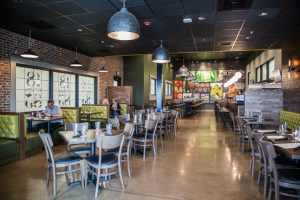
Lessons Grocers Can Learn From Department Stores: Introduction
Each month brings with it another new dominant headline on how one of our most frequent shopping experiences—buying groceries—will be forever changed. Curbside pickup. Driverless cars delivering to our homes. Automatic checkouts.
The technological rush shows a willingness by the largest chains to ensure they outmaneuver upstarts and avoid suffering the same decline of the department store. Consider this. Annual U.S. department store sales peaked in 2000 at just over $232 billion. They’ve been falling ever since, and 2017 saw only $150 billion in sales, the lowest in at least 25 years. Over that time, many leading brands – Boston, Bonwit Teller, Burdines, The Bon-Ton, and B. Altman’s just to name a few B’s – have been absorbed or simply vanished, and the shake-out is far from over. In 1992, department stores accounted for the fourth-largest share of total retail sales. Today, they have fallen to 12th.
What’s behind the precipitous drop? One explanation is a change in shoppers’ behavior. Those who once appreciated the wide selection of brands available at department stores now opt for the convenience and even greater selection offered online. While this has certainly been a factor, it isn’t the full story, though. Similarly, situated retailers such as specialty and general merchandise stores haven’t experienced the same kinds of sales impacts.
The fact is department stores failed to adapt and evolve their merchandising and real-estate strategies with the times and with shoppers. What used to be destinations for retail and socializing – fun places to shop with memorable and unique design features – became utilitarian and generic. Because they ignored customers’ needs and failed to invest in spaces, amenities and the overall brand experience, department stores simply lost their appeal – and relevance.
Grocers Seeing a Different Kind of Shopper
As department stores have faded, the grocery category has remained the second-largest share of retail sales over the last 25 years with revenue nearly doubling over that time from $337 billion to $639 billion. What happened to department stores in the 2000s, however, is now threatening the supermarket. Consolidation and the trend toward commoditization are increasing. New online entrants such as FreshDirect and Peapod are entering the space seeking to simplify the shopping experience. Amazon’s purchase of Whole Foods has also been a major wake-up call, challenging operators to acknowledge and embrace changing consumer expectations, expand their offerings, redefine convenience and deliver a relevant – even engaging – shopping experience.
And, unlike their department store brethren, grocery stores have responded in bold and unique ways:

Kroger Kitchen 1883
- Aldi will open inside 10 Kohl’s stores around the country. While this is hardly the first pairing of food and fashion, it is certainly a departure from the norm.
- Kroger is launching a restaurant chain called Kitchen 1883, both within stores and as standalone locations. It has also purchased a sales analytics company and delivery service to better understand and serve its customers. Recently, rumors have also been circulating that Kroger and Target might merge into one super-powered grocery store.
- Walmart, America’s biggest grocery store by sales, acquired e-commerce site Jet.com in 2016 to better fend off Amazon’s online grocery challenge and appeal to urban millennials that it had been unable to reach.
What Macy’s Can Teach Ralphs
The above are major, strategic investments and suggest that groceries and supermarkets have no intention of standing still – and tempting the fate of department stores. Groceries have continued to add home goods, clothing and personal care items that were once the purview of department stores. Grocers should look beyond this traditional department store merchandise, though, as they can learn a lot from how department stores have historically positioned that merchandise for sale, everything from the product displays and lighting to signage and the check-out process.
Stay tuned for more lessons in the coming days.
